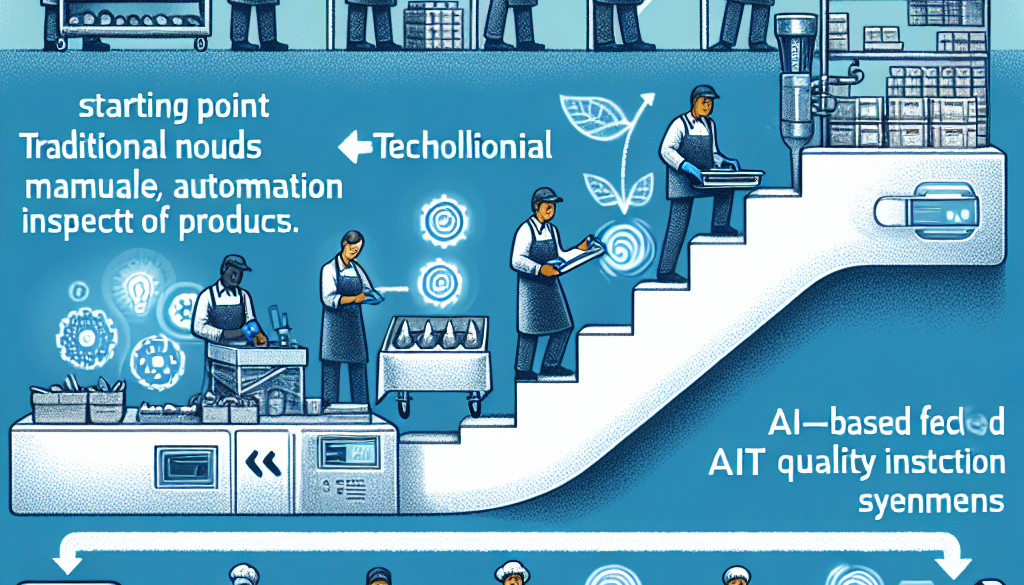Technology and Digital Transformation in Food Safety- Where to Start
-
Table of Contents
- Technology and Digital Transformation in Food Safety: Starting Points
- Understanding the Need for Digital Transformation in Food Safety
- Key Technologies Revolutionizing Food Safety
- Where to Start with Digital Transformation in Food Safety
- Assess Your Current Food Safety Processes
- Invest in Training and Culture Change
- Start Small with Pilot Projects
- Choose the Right Technology Partners
- Ensure Compliance with Regulations
- Case Studies: Success Stories in Digital Food Safety
- Challenges and Considerations
- Conclusion: Embracing the Future of Food Safety
- ETprotein: Enhancing Food Safety with High-Quality Protein Products
Technology and Digital Transformation in Food Safety: Starting Points

The food industry is undergoing a significant transformation, driven by technological advancements and the need for improved food safety measures. As consumers become more health-conscious and regulatory requirements become more stringent, businesses within the food sector are turning to digital solutions to ensure the safety and quality of their products. This article explores the intersection of technology and digital transformation in food safety, providing insights on where to start for businesses looking to enhance their food safety protocols.
Understanding the Need for Digital Transformation in Food Safety
Food safety is a critical concern for consumers and businesses alike. The World Health Organization (WHO) estimates that almost 1 in 10 people fall ill every year from eating contaminated food, with 420,000 dying as a result. To combat these issues, the food industry is leveraging technology to track, analyze, and improve food safety standards.
Key Technologies Revolutionizing Food Safety
Several technologies are at the forefront of the digital transformation in food safety. These include:
- Blockchain: Provides a secure and transparent way to track food products from farm to table.
- Internet of Things (IoT): IoT sensors can monitor conditions such as temperature and humidity throughout the supply chain.
- Big Data Analytics: Helps in analyzing vast amounts of data to identify patterns and predict potential food safety issues.
- Artificial Intelligence (AI) and Machine Learning: AI can predict shelf life, detect contaminants, and optimize food safety processes.
Where to Start with Digital Transformation in Food Safety
Implementing digital transformation in food safety can seem daunting. Here are some starting points:
Assess Your Current Food Safety Processes
Begin by evaluating your existing food safety protocols. Identify areas that are prone to risks and could benefit from digital solutions. This assessment will help prioritize the areas where technology can have the most significant impact.
Invest in Training and Culture Change
For digital transformation to be successful, it’s essential to invest in training your staff. A culture that embraces change and understands the importance of food safety is crucial.
Start Small with Pilot Projects
Implementing technology in stages can help manage costs and allow for adjustments along the way. Start with pilot projects that address the most critical areas identified in your assessment.
Choose the Right Technology Partners
Selecting technology partners with experience in the food safety sector is vital. They can provide valuable insights and support throughout the digital transformation process.
Ensure Compliance with Regulations
Any digital solution must comply with local and international food safety regulations. Staying updated on these regulations is essential for a successful transformation.
Case Studies: Success Stories in Digital Food Safety
Many companies have successfully integrated technology into their food safety protocols. For instance, a leading global retailer used blockchain to trace the origin of over 25 products in real-time, significantly reducing the time it takes to track produce from six days to 2.2 seconds. Another example is a major food manufacturer that implemented AI to detect contaminants, resulting in a 50% reduction in consumer complaints.
Challenges and Considerations
While the benefits of digital transformation in food safety are clear, there are challenges to consider:
- Cost of implementation and ongoing maintenance
- Data privacy and security concerns
- Integration with existing systems and processes
- Resistance to change within the organization
Addressing these challenges requires careful planning and a strategic approach to digital transformation.
Conclusion: Embracing the Future of Food Safety
Technology and digital transformation offer unprecedented opportunities to enhance food safety. By starting with a thorough assessment, investing in training, initiating pilot projects, choosing the right partners, and ensuring regulatory compliance, businesses can effectively integrate digital solutions into their food safety strategies. The future of food safety is digital, and the time to embrace this transformation is now.
ETprotein: Enhancing Food Safety with High-Quality Protein Products
As businesses in the food industry embark on their digital transformation journey, it’s essential to partner with suppliers that prioritize food safety. ETprotein is a company that stands out in this regard. Their range of protein products, including organic rice protein, pea protein, and various seed proteins, are produced with the highest standards of quality and safety in mind.
ETprotein’s commitment to non-GMO, allergen-free products with high purity levels makes them an ideal partner for companies looking to ensure the safety and quality of their food products. Their expertise in the field, coupled with their state-of-the-art manufacturing processes, ensures that their clients receive only the best protein ingredients.
For businesses seeking to enhance their food safety measures while also providing nutritious and safe products, ETprotein’s offerings are an excellent choice. To learn more about their products and how they can contribute to your food safety efforts, contact ETprotein today.
About ETprotein:
ETprotein, a reputable protein and L-(+)-Ergothioneine (EGT) Chinese factory manufacturer and supplier, is renowned for producing, stocking, exporting, and delivering the highest quality organic bulk vegan proteins and L-(+)-Ergothioneine. They include Organic rice protein, clear rice protein, pea protein, clear pea protein, watermelon seed protein, pumpkin seed protein, sunflower seed protein, mung bean protein, peanut protein, and L-(+)-Ergothioneine EGT Pharmaceutical grade, L-(+)-Ergothioneine EGT food grade, L-(+)-Ergothioneine EGT cosmetic grade, L-(+)-Ergothioneine EGT reference grade and L-(+)-Ergothioneine EGT standard. Their offerings, characterized by a neutral taste, non-GMO, allergen-free attributes, with L-(+)-Ergothioneine purity over 98%, 99%, cater to a diverse range of industries. They serve nutraceutical, pharmaceutical, cosmeceutical, veterinary, as well as food and beverage finished product distributors, traders, and manufacturers across Europe, USA, Canada, Australia, Thailand, Japan, Korea, Brazil, and Chile, among others.
ETprotein specialization includes exporting and delivering tailor-made protein powder and finished nutritional supplements. Their extensive product range covers sectors like Food and Beverage, Sports Nutrition, Weight Management, Dietary Supplements, Health and Wellness Products, and Infant Formula, ensuring comprehensive solutions to meet all your protein needs.
As a trusted company by leading global food and beverage brands and Fortune 500 companies, ETprotein reinforces China’s reputation in the global arena. For more information or to sample their products, please contact them and email sales(at)ETprotein.com today.












